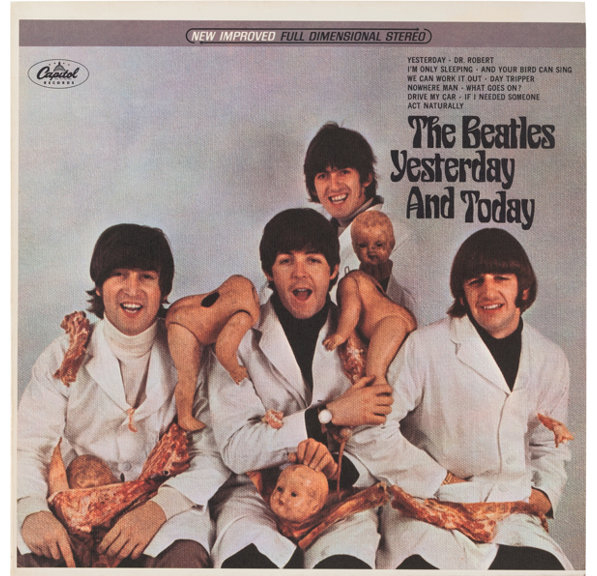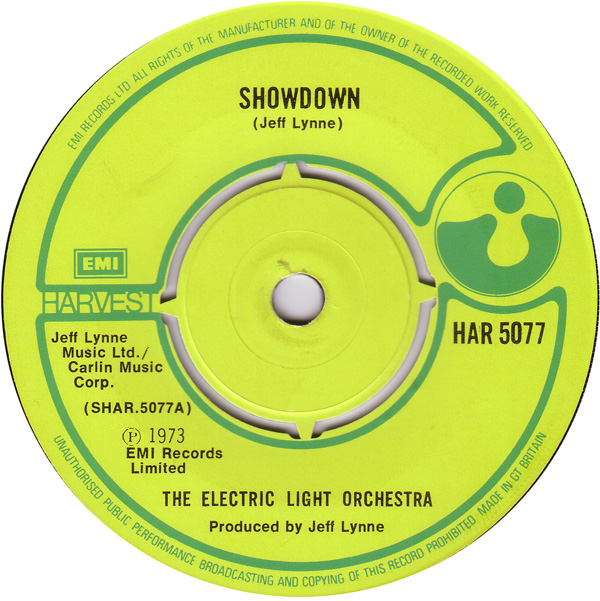Without question my most memorable interview and on-air experience to date was on September 28, 1974, a Saturday afternoon I spent with John Lennon.
I had met him just a few weeks before at the Record Plant recording studio and casually asked him if he’d like to come up to the station to talk about his forthcoming album Walls and Bridges. I doubted anything would come of it, since none of the Beatles had ever visited our station before. When he showed up eager to talk, bringing with him some obscure 45’s he wanted to share with the audience, I didn’t know what to expect.
What began as an opportunity to promote the new album, turned into two hours of rare Beatle stories, insights into his immigration struggles, and John as the DJ, introducing and commenting on all the music, commercials and weather. Highlights from the interview can be heard in The Beatles Anthology, Eight Days a Week – The Touring Years, John Lennon’s Jukebox, and are featured prominently in the award winning PBS American Masters film, LENNONYC. The complete show is part of the permanent collection of the Paley Center For Media (formerly the Museum of Television and Radio) and the full interview transcript appears in the book Lennon on Lennon. The transcript and audio are now on John’s official website. The complete interview is presented here in ten chapters with my commentary on each of them. Here’s part one:
PART TWO: Walls & Bridges

In part #2 of the interview we’re just coming out of the song “#9 Dream” from the newly released Walls and Bridges album. John tells us a bit about the track’s strange ending, the album cover art and the key players. We also talk about Beatles producer George Martin and John introduces the first of several “oldies but goldies” he’s brought along from his personal collection.
PART THREE: The Butcher Cover

‘Butcher Cover’
In this excerpt, we’re just coming out of two songs, the first which John had chosen to play. It was an obscure oldie, “Watch Your Step” by Bobby Parker that he brought along from his personal collection. He wanted to show how a particular musical “riff” in the song wound up influencing various songs including the Beatles’ “Day Tripper.” The conversation was unfolding live in real time. None of the music had been pre-selected.

As “Watch Your Step” played I pulled the Beatles’ album Yesterday and Today that contained “Day Tripper” from our massive wall of albums just behind us in the studio. As I cued the song up I instinctively asked him off-air about the album’s infamous cover, which was known then and now as the “Butcher Cover.” To my surprise and delight he quickly started to tell me the story so I politely stopped him and asked if we can do it live on-the-air. Without any hesitation he smiled and seemed eager to do so and it was at this point that I began to realize that maybe we could comfortably discuss some Beatles’ history along with promoting his then new Walls and Bridges album.
It was the first time he ever told the story live on-air and it set the tone for the rest of our conversation. Excerpts from this portion of the interview recently appeared in the Ron Howard documentary “The Beatles: Eight Days a Week”.
PART FOUR: John Lennon talks about ELO

In this segment we’ve just played “I Call Your Name,” the first of several Beatles’ songs that John will discuss and offer some new insights into throughout the course of the interview. Commercials follow with the end of a spot for an upcoming appearance by The Joffrey Ballet prompting John to share his auntie’s unique perspective on male ballet dancer’s tights.
In addition to featuring his own album and some vintage 45RPM singles, we’ve chosen the current release from The Electric Light Orchestra to play next. John wants to point out that this song, like others he’s mentioned, has probably borrowed a riff or two from some earlier hits. He introduces the track referring to ELO as “Son of Beatles”. It is a comment that will please Jeff Lynne and the other members of ELO when they learn about it. Interestingly, the comment foreshadows Jeff’s future involvement in producing George Harrison and the Anthology Beatles’ reunion songs.
PART FIVE: Pussy Cats

Harry Nilsson’s album Pussy Cats, produced by John, was released on August 19th, 1974, just a little over a month before this interview. Nilsson had been a favorite of the Beatles since his 1967 debut album Pandemonium Shadow Show. In fact, at the press conference that was held to introduce the new Apple company in 1968, when John and Paul were asked to name their favorite American group, they both replied Nilsson.
Harry and John teamed up in March 1974 with the idea that John would produce Harry’s next album. During the three month process, they did succeed in creating an album, but not without an excessive amount of partying, drinking and possible drug use which would ultimately lead to the period being called “Lennon’s Lost Weekend.”
John alludes to this behavior in this portion of the interview, but also gives a good behind the scenes look at the making of the album. There is also a passing reference to an ongoing project with Phil Spector, which will ultimately become John’s Rock ‘n’ Roll album.
PART SIX: Beatles Reunion

This excerpt begins with one of John’s irreverent weather reports that are scattered throughout the show. He seemed to take great pleasure in turning what otherwise might normally be a standard almost dull part of the typical radio show of the time into a near tour de force.
Next is the set-up to play a new song from the band Splinter (signed to George Harrison’s Dark Horse label) which provides me with the perfect opening to ask about a possible Beatles reunion.
From the day they officially announced their breakup in 1970 to John’s death in 1980, there was always the hope among Beatles’ fans that someday they might have a reunion of some sort. John’s answer is remarkably candid and witty, but does provide an inside look of what actually was going on among the four of them. In hindsight, one can only wonder what might have been as John replies to my question of whether things are cordial among the four of them with the response “Oh warm, very warm my dear!”
We also are treated to another one of John’s wonderful station identification breaks and, much like his weather forecasts, what is normally a dry bit of radio standard operating procedure becomes another characteristic display of the Lennon wit. On a very personal level for me, it becomes even more memorable.
PART SEVEN: Some Other Guy

As we begin this portion, we’re coming out of an advertisement for a classical album providing John with another humorous opportunity to sneak in a plug for his own LP. Then it’s a live commercial read by John advertising a then popular rock club in New Jersey (The Joint in the Woods) filled with assorted biting musical and social commentary.
Following another weather report, we’re back to one of the 45’s John brought with him from his own collection. He sets up Richie Barrett’s “Some Other Guy” from 1962 and explains how it relates back to “What’d I Say” and will ultimately provide the inspiration for the opening of “Instant Karma”.
PART EIGHT: I Wanna Be Your Man

In this section, we explore the relationship between The Rolling Stones and The Beatles and get John’s version of the story behind the only Lennon-McCartney song recorded by the Stones – “I Wanna Be Your Man.”
We also get a quick reference to a session he had recently produced for Mick Jagger, which years later will be identified as the song “Too Many Cooks,” written by Willie Dixon. There’s also a discussion of the London club scene in the mid-sixties referencing the Ad Lib Club. Then John explains and plays another of the oldie 45’s he’s brought along, “Daddy Rolling Stone” by Derek Martin.
PART NINE: Immigration Fight

At this point, we are nearly 90 minutes into the show – it’s about 5:30PM – and I know with only a half an hour left I want to turn to a very important non-musical subject.
John is in the midst of a very tough fight with the U.S. Immigration Department to stay in the country. He explains to me why he is fighting so hard to remain here and encourages the listeners to write to their congressman or senator to help his cause.
He has become a very popular figure in his adopted NYC and shares how much he enjoys his life as a New Yorker and not just as a celebrity. All of this leads to “Scared,” another track from the new album.
PART TEN: I Am The Walrus

In the final portion of the program I have the opportunity to finally state how wonderful and weird the afternoon has been for me to spend two hours live on the radio with one of my rock ‘n’ roll heroes.
Not surprisingly, he’s very much aware of how I’m feeling and explains that it was like that for him two years earlier (in 1972) when he met Chuck Berry for the first time on The Mike Douglas Show.
There’s still time left for us to play “I Am the Walrus” and John shares for the first time anywhere how a random broadcast of “King Lear” on the BBC became a part of the song’s mix. We discuss “Revolution 9” and learn the secret behind the “…number nine, number nine…” chant.
Finally, it’s a bit of “Beef Jerky” that brings the most magical day of my radio career to an end.
